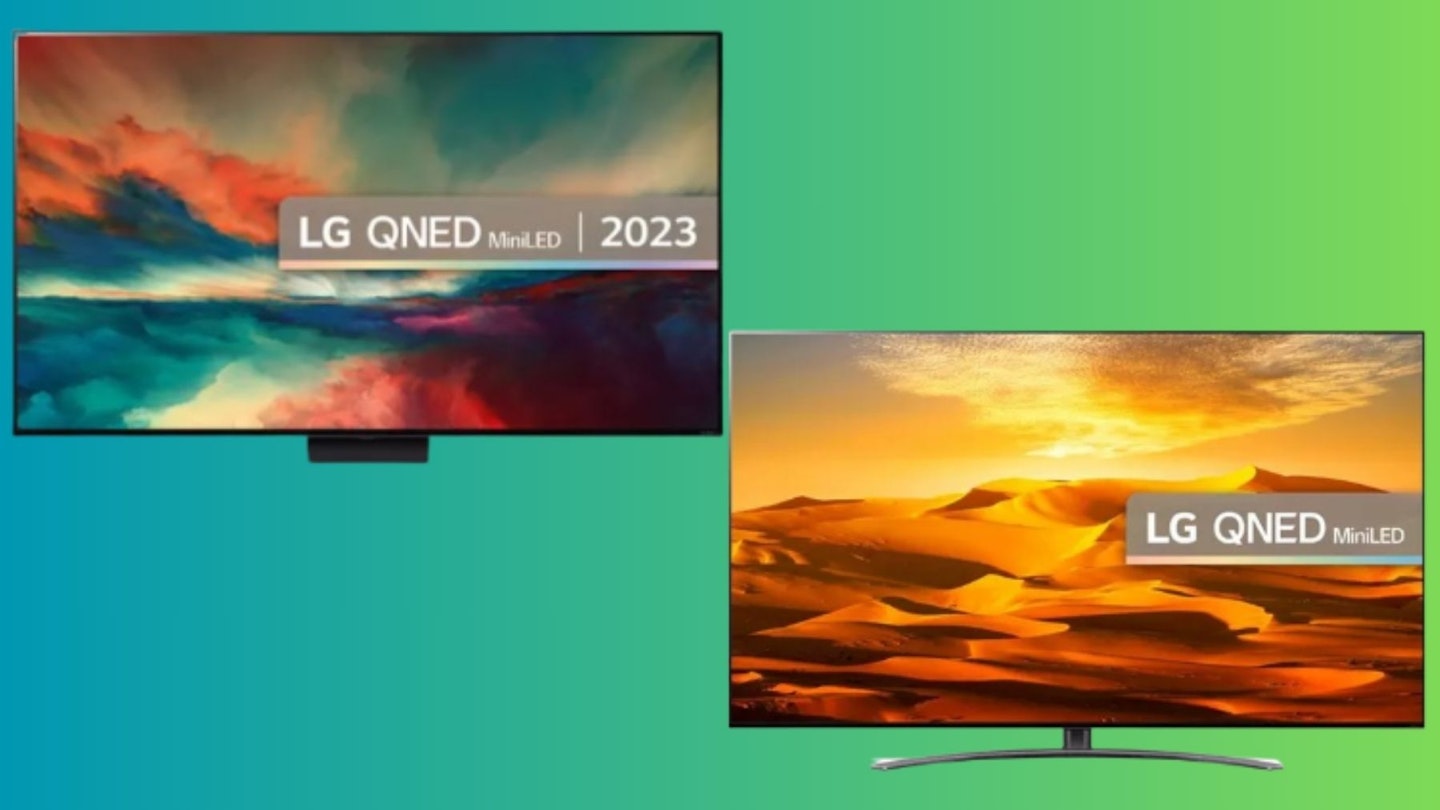You've heard of OLED and QLED, but now there's a new screen technology that quality TVs may have: QNED. So, what exactly is it, and how does it hold up against OLED and QLED?
Well, Samsung paved the way for QLED TVs, and QNED is LG's equivalent. A QLED screen is illuminated with a layer of Quantum Dots, and the same can be said for QNED. What makes this new screen stand out is its LG NanoCell layer.
The NanoCell layer is designed to enhance the contrast that a regular QLED has. When the LED layer emits light, some can escape, muddying the overall contrast. With the NanoCell layer in front of the Quantum Dot layer, this light can be absorbed, making the TV image much sharper. As such, QNED technology is perfect if you need a TV for a bright room. The extra bit of contrast makes it all the better for difficult lighting situations.
That's the QNED in a brief summary, but there's still more to discuss. We'll examine more differences between the screen types, why you would choose a QNED over them, and what potential weaknesses it may have.
OLED, QLED, and QNED
Let's have a quick reminder on the details of the main screen types:
OLED: With an OLED screen, each pixel is capable of producing its own light. This makes the visuals colourful, with darker scenes looking especially stunning. Unlike a regular LED screen, there's no backlight here, since the individual pixel light is more than sufficient.
QLED: A QLED screen has the distinct feature of a Quantum Dot layer. These Quantum Dots emit light that produces a much brighter overall picture. Some models allow you to dim and adjust this how you like, so it's ideal for any room with so-so lighting conditions.
QNED: A QNED screen shares much of the same technology as a QLED, including the Quantum Dot layer. What sets it apart is the LG NanoCell layer, which, as we discussed earlier, helps prevent excess light from bleeding out, producing visuals with better contrast.
Why choose a QNED?
In most cases where a QLED would be ideal for you, a QNED is the step up. While the difference between the two isn't staggering, if a QNED meets your size, port, and audio requirements, then the improved contrast is hard to pass up. That said, we wouldn't prioritise a NanoCell layer over important specs.
The improved contrast is a blessing for watching shows and movies. We all know the struggle of straining to see what's going on in a darker scene only to be blasted by daylight in the next, or trying to angle curtains and blinds in such a way to block sunrays hitting the screen. A QNED screen is a fantastic upgrade for your movie-watching setup.
We often enjoy QLED screens for gaming use, so it's unsurprising that QNED does it well too. The sharper image makes it ideal for getting immersed in a horror game.
What are the drawbacks?
QNED models are still relatively new, so there aren't that many options to choose from. The majority of them will be LG TVs, which are by all means great models, but if you prefer another brand you might be a bit restricted.
Most importantly, a QNED isn't a massive leap up in quality over a QLED. The latter has been around for a while now and enjoys various TV designs with plenty of benefits and advanced features. The QNED's contrast is excellent, but it doesn't win out over the versatility that a QLED can offer.
Having a backlight can also be a double-edged sword. On the one hand, it's a great feature that further enables the TV to be usable in different lighting environments. On the other, backlights can (albeit rarely) have issues and break, leaving you with very dark visuals. This isn't an issue exclusive to QNED TVs, but it is an advantage that an OLED has over them.
Is a QNED TV worth it?
If you're looking for a TV upgrade, you can't really go wrong with a QNED. It's a nice step up from the QLED's structure and offers a nice alternative to the OLED. We'd probably prefer to wait for the market to have more QNED models available before moving over to one, but the existing QNED TVs so far have plenty of appeal to them.
Kyle Purves is a Commercial Content Writer for What’s The Best, with an avid interest in all things gaming and tech.
They’re well-versed in reviewing a variety of tech products, with a soft spot for speakers and earphones. They’re also no stranger to hunting down the best savings, always wanting to get the best deal possible. Outside of work, they can often be found playing through an RPG, listening to Japanese noise rock, or trying to catch up with their ever-expanding list of shows and anime to watch. If possible, they try to play Dungeons and Dragons a couple of times a week, but getting six adults to be free at the same time is easier said than done.
Subscribe to the What’s The Best Newsletter to keep up to date with more of the latest reviews and recommendations from the rest of the What’s The Best team.
